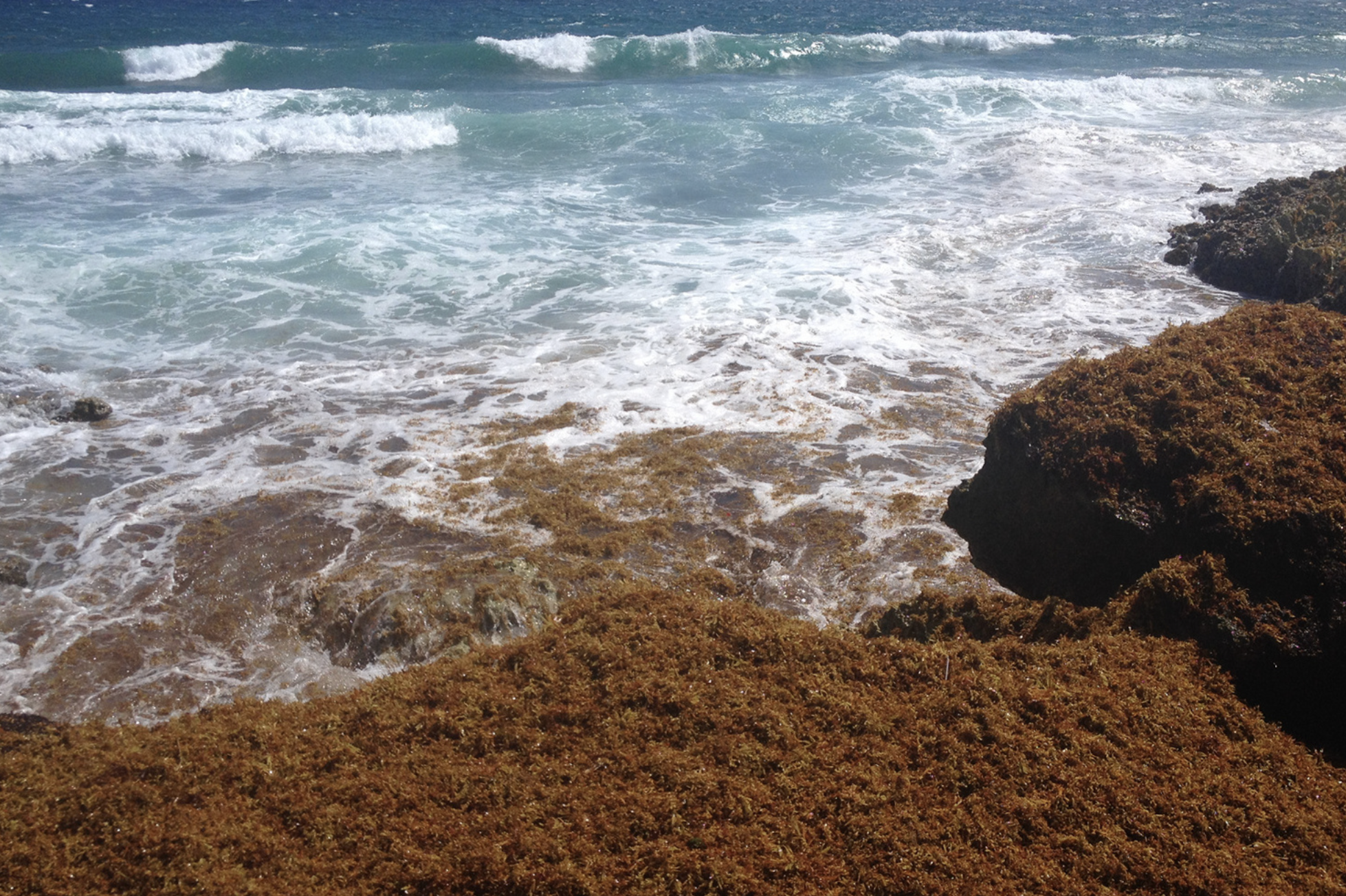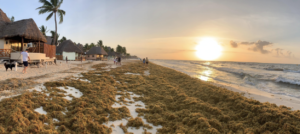
In recent years, there has been a significant uptick in the occurrence of sargassum seaweed blooms taking over Caribbean beaches. While these floats of seaweed and microalgae provide a fantastic home for many marine animals that depend on them for survival and migration, it can be less than amazing to swim in. Not to mention the brown water and an awful sulfurous smell as it bakes in the sun rotting away. Not exactly what you imagined when you’re dreaming of your trip to a beautiful beach in the Caribbean.
What is Sargassum?
While this seaweed, or more accurately, microalgae is a natural occurrence for this environment, in recent years various man-made factors have contributed to the unsustainable growth of this seaweed type. The higher tidal temperatures and nutritional wash off around the Amazon Rainforest beaches and the Amazon River delta have contributed to a drastic and uncontrolled influx of this ocean plant. Plus, spring time starts a period in which the sea temperatures rise, so it accelerates the reproduction. That is why you’ll find excessive amounts of it on Caribbean beaches during the spring and summer months.
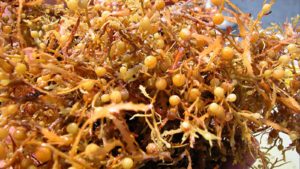
Where Does Sargassum Come From?
Local experts suggest that this particular type of sargassum originated off the coast of South America, specifically Brazil. It is also believed that the sargassum seaweed reaches the Caribbean from two main sources: the Sargasso Sea in the Bermuda Triangle and off the coast of Brazil. Sargassum can also survive in a wide range of temperatures, so you’ll find it floating in every ocean except the Antarctic.
What Areas Have Sargassum?
The seaweed arrival is a regional phenomenon that affects, without distinction, all the coasts of many countries and territories in the Caribbean. Mexico does seem to take the hardest hit with it. Sargassum has been reported to invade the coasts of places such as Turks and Caicos, The Bahamas, Jamaica, Grand Cayman, The Dominican Republic, Puerto Rico, Honduras, Belize, the coastal region of Quintana Roo Mexico, as well as Florida in the United States, to name a few.

Many resorts have staff that work around the clock to try to remove as much seaweed as possible. Staffers take boats out to draw the seaweed away from beaches and employees and volunteers work tirelessly to clear the seaweed off of the beaches before most people wake up. While many of the resorts do their best to try and keep their beaches clear of the seaweed, it’s oftentimes too much to handle. The latest news is that the Mexican Navy is sending multiple ships to help collect the sargassum and will be installing seaweed barriers at strategic points along the coast.
How Can I Track the Seaweed Situation Before My Trip?
The “season of seaweed” tends to hit the coastlines in the Caribbean between April and October of each year. Sargassum is also a very beach-by-beach and day-by-day situation, which means it could be there one day and gone the next depending on the tides and the weather.
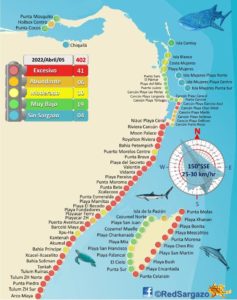
As of right now, you can see from the map of Quintana Roo above that sargassum seaweed affects the eastern facing beaches in Mexico the most, while the northern shores and the east side of Cozumel is relatively un-impacted by the blooms, for now. Feel free to follow this sargassum Facebook group to get regular updates.
Don’t Let Sargassum Ruin Your Trip
If you have already booked your trip and were unaware of this situation, don’t fret. There is so much to do in Mexico that doesn’t involve being on the beach or swimming in the ocean. You can use this vacation to explore inland, visit historical landmarks such as the Mayan ruins, swim in a cenote, go on a boat cruise, or even visit a museum or two. There are so many amazing things to do and see in this area that the beach isn’t the only thing to enjoy. By doing this, you’ll also help support the local economy that survives on tourism dollars while still enjoying your vacation.
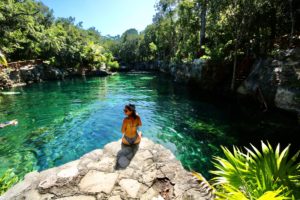
You may also find that you get just as much enjoyment from your trip by basking in the sun next to the pool and hanging out at the pool bar all day at your resort. If you’re still concerned about the Sargassum getting in the way of enjoying your time in Mexico, we can also look at many great resorts and activities on the western side of Mexico too. Some great places to visit are Puerto Vallarta, Mazatlan, or even Cabo San Lucas. If the beach is your main attraction, we could book your vacation to Mexico in the winter instead while the sargassum impact is at a minimum.
Have a Professional Help You With What You Need to Know About Sargassum
When you book your trip with Wanderland Escapes, you can be rest assured that we will tell you what you need to know about sargassum and the likelihood of it being a concern during your trip. Additionally, we can also research and suggest alternative locations or things to fill your itinerary to give you new and exciting adventures.
Contact us today to start planning your next trip!


